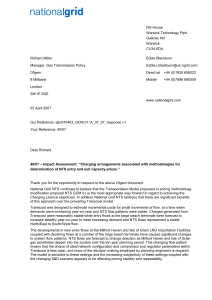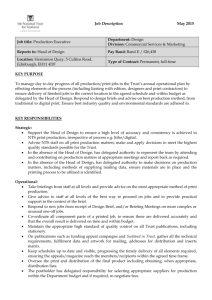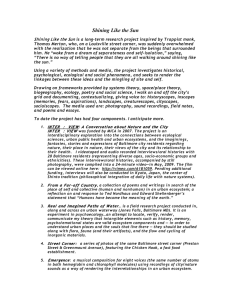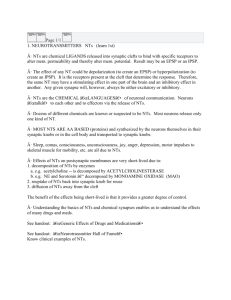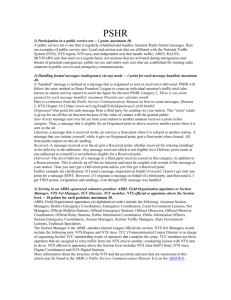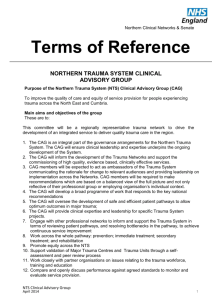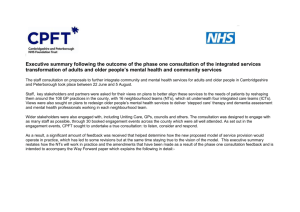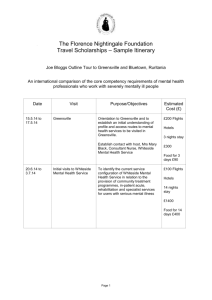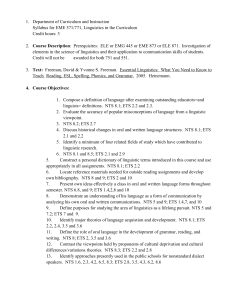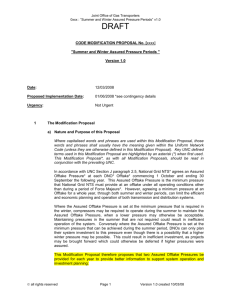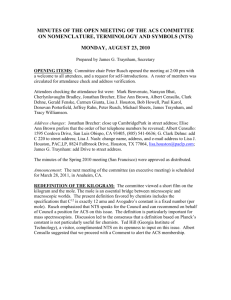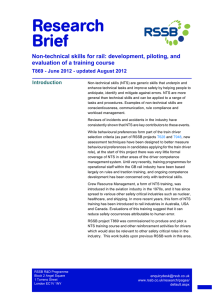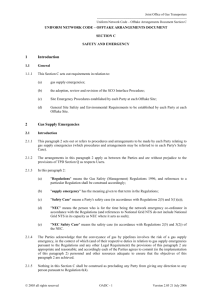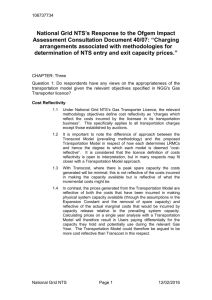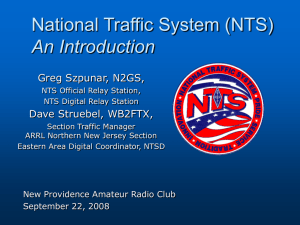Guidance note to complete the Gas Availability Status
advertisement
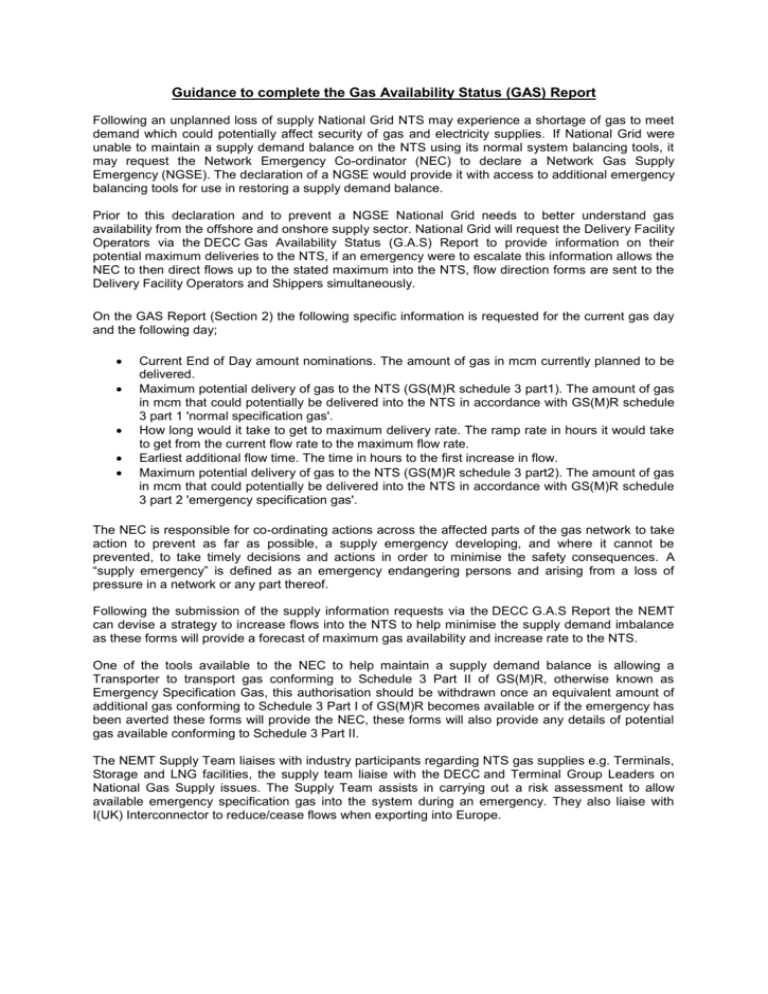
Guidance to complete the Gas Availability Status (GAS) Report Following an unplanned loss of supply National Grid NTS may experience a shortage of gas to meet demand which could potentially affect security of gas and electricity supplies. If National Grid were unable to maintain a supply demand balance on the NTS using its normal system balancing tools, it may request the Network Emergency Co-ordinator (NEC) to declare a Network Gas Supply Emergency (NGSE). The declaration of a NGSE would provide it with access to additional emergency balancing tools for use in restoring a supply demand balance. Prior to this declaration and to prevent a NGSE National Grid needs to better understand gas availability from the offshore and onshore supply sector. National Grid will request the Delivery Facility Operators via the DECC Gas Availability Status (G.A.S) Report to provide information on their potential maximum deliveries to the NTS, if an emergency were to escalate this information allows the NEC to then direct flows up to the stated maximum into the NTS, flow direction forms are sent to the Delivery Facility Operators and Shippers simultaneously. On the GAS Report (Section 2) the following specific information is requested for the current gas day and the following day; Current End of Day amount nominations. The amount of gas in mcm currently planned to be delivered. Maximum potential delivery of gas to the NTS (GS(M)R schedule 3 part1). The amount of gas in mcm that could potentially be delivered into the NTS in accordance with GS(M)R schedule 3 part 1 'normal specification gas'. How long would it take to get to maximum delivery rate. The ramp rate in hours it would take to get from the current flow rate to the maximum flow rate. Earliest additional flow time. The time in hours to the first increase in flow. Maximum potential delivery of gas to the NTS (GS(M)R schedule 3 part2). The amount of gas in mcm that could potentially be delivered into the NTS in accordance with GS(M)R schedule 3 part 2 'emergency specification gas'. The NEC is responsible for co-ordinating actions across the affected parts of the gas network to take action to prevent as far as possible, a supply emergency developing, and where it cannot be prevented, to take timely decisions and actions in order to minimise the safety consequences. A “supply emergency” is defined as an emergency endangering persons and arising from a loss of pressure in a network or any part thereof. Following the submission of the supply information requests via the DECC G.A.S Report the NEMT can devise a strategy to increase flows into the NTS to help minimise the supply demand imbalance as these forms will provide a forecast of maximum gas availability and increase rate to the NTS. One of the tools available to the NEC to help maintain a supply demand balance is allowing a Transporter to transport gas conforming to Schedule 3 Part II of GS(M)R, otherwise known as Emergency Specification Gas, this authorisation should be withdrawn once an equivalent amount of additional gas conforming to Schedule 3 Part I of GS(M)R becomes available or if the emergency has been averted these forms will provide the NEC, these forms will also provide any details of potential gas available conforming to Schedule 3 Part II. The NEMT Supply Team liaises with industry participants regarding NTS gas supplies e.g. Terminals, Storage and LNG facilities, the supply team liaise with the DECC and Terminal Group Leaders on National Gas Supply issues. The Supply Team assists in carrying out a risk assessment to allow available emergency specification gas into the system during an emergency. They also liaise with I(UK) Interconnector to reduce/cease flows when exporting into Europe.


